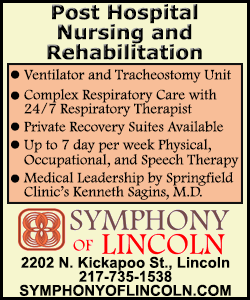|
Speedy eye-tracking
device seeks to detect concussions
 Send a link to a friend
Send a link to a friend
[April 21, 2016]
By Ben Gruber
BOSTON (Reuters) - A newly-approved device
using infrared cameras to track eye movements promises to help detect
concussions in one minute, offering a speedy insight into whether
athletes have sustained the injury.
|
|
 Boston-based neuro-technology company SyncThink got clearance from
the U.S. Food and Drug Administration in February for its first
device, "Eye-Sync", the first of its kind to get the green light
from the authority amid growing concerns over brain injuries in
contact sports. Boston-based neuro-technology company SyncThink got clearance from
the U.S. Food and Drug Administration in February for its first
device, "Eye-Sync", the first of its kind to get the green light
from the authority amid growing concerns over brain injuries in
contact sports.
Head trauma affects the brain's anticipatory neural network which
guides human reactions and the tool focuses on analyzing visual
response.
The user puts on a virtual reality headset connected to a computer
tablet, with a moving circle appearing in the display.
As the user follows the circle, the cameras follow the eyes and the
data collected is compared against a baseline of normal eye movement
for diagnosis.

"Our assessment data is collected at a very high rate which allows
us to produce a full assessment within one minute," Dan Beeler,
SyncThink chief technology officer, told Reuters.
Symptoms of concussions, a mild form of traumatic brain injury
sustained with a blow to the head, can vary from headaches and
confusion to slurred speech and vomiting. In certain instances, they
can take days to appear.
Concussions can be difficult to diagnose, leaving athletes at higher
risk of a more serious brain injury if they continue to perform
concussed.
Last month a top National Football League official acknowledged a
link between football-related concussions and the degenerative brain
disease chronic traumatic encephalopathy (CTE) in testimony at a
U.S. congressional hearing.
In other contact sports, like rugby, soccer and Australian rules
football, there is a growing awareness of the risks posed by
concussion with several changing their rules or adopting new
protocols to ensure a higher level of player safety.
[to top of second column] |

"There is much more awareness of the risks out there, a growing
acceptance of those risks and ways to mitigate them and our
technology can play a part in that," Beeler said.
"The technology we have built into this device has been developed
over the past decade and we have been very careful about it."
The company has been working with the U.S. military and university
sports teams on the device, which costs $25,000.
It is not the only company looking at such equipment. New York-based
Oculogica is developing a "patent-pending eye tracking technology"
to help detect concussions and traumatic brain injury.
(Editing by Ken Ferris)
[© 2016 Thomson Reuters. All rights
reserved.] Copyright 2016 Reuters. All rights reserved. This material may not be published,
broadcast, rewritten or redistributed.
 |